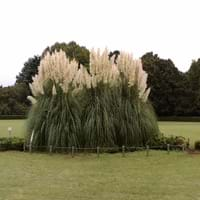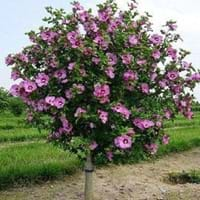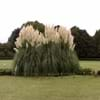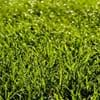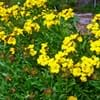Compare Pampas Grass and Rose of Sharon Hibiscus
Difference Between Pampas Grass and Rose of Sharon Hibiscus
If you are confused whether Pampas Grass or Rose of Sharon Hibiscus are same, here are some features about those plants to help you choose better. Many people think that these two plants have the same characteristics, but one can see Pampas Grass and Rose of Sharon Hibiscus Information and learn more about it. Fertilizers required for proper growth of Pampas Grass are Apply 10-10-10 amount, Nitrogen, Phosphorous and Potassium, whereas for Rose of Sharon Hibiscus fertilizers required are Apply 10-10-10 amount, Balanced liquid fertilizer, Do not fertilize new plants until at least a month and Use a low phosphate fertilizer to improve the quality of the blooms. Hence, one should know the basic difference between Pampas Grass and Rose of Sharon Hibiscus if you are planning to have them in your garden to enhance its beauty.
<Flowering PlantsImportance of Pampas Grass and Rose of Sharon Hibiscus
Want to have the most appropriate plant for your garden? You might want to know the importance of Pampas Grass and Rose of Sharon Hibiscus. Basically, these two plants vary in many aspects. Compare Pampas Grass and Rose of Sharon Hibiscus as they differ in many characteristics such as their life, care, benefits, facts, etc. Every gardener must at least have the slightest clue about the plants he wants to plant in his garden. Compare their benefits, which differ in many ways like facts and uses. The medicinal use of Pampas Grass is Not Available whereas of Rose of Sharon Hibiscus is anti-inflammatory, Diuretic, Hair Loss, High blood pressure and Vitamin C. Pampas Grass has beauty benefits as follows: Not Available while Rose of Sharon Hibiscus has beauty benefits as follows: Not Available.
Compare Facts of Pampas Grass vs Rose of Sharon Hibiscus
How to choose the best garden plant for your garden depending upon its facts? Here garden plant comparison will help you to solve this query. Compare the facts of Pampas Grass vs Rose of Sharon Hibiscus and know which one to choose. As garden plants have benefits and other uses, allergy is also a major drawback of plants for some people. Allergic reactions of Pampas Grass are Itchiness and Skin cuts whereas of Rose of Sharon Hibiscus have no allergic reactions respectively. Having a fruit bearing plant in your garden can be a plus point of your garden. Pampas Grass has showy fruits and Rose of Sharon Hibiscus has no showy fruits. Also Pampas Grass is flowering and Rose of Sharon Hibiscus is not flowering . You can compare Pampas Grass and Rose of Sharon Hibiscus facts and facts of other plants too.
